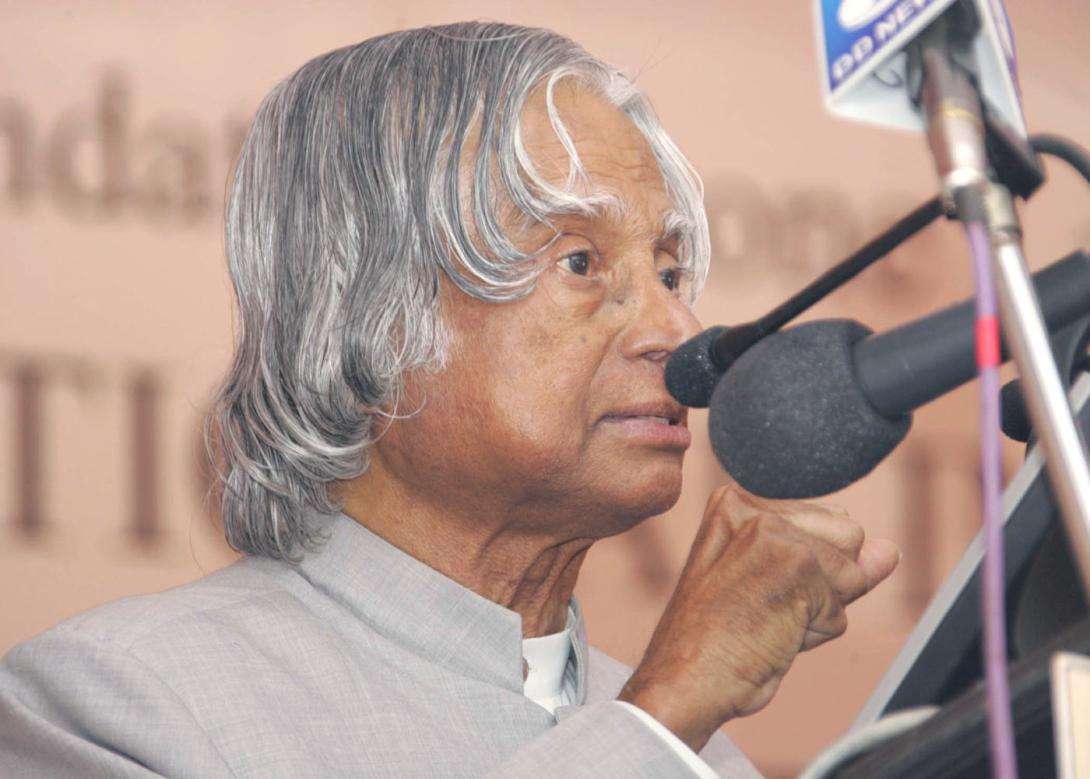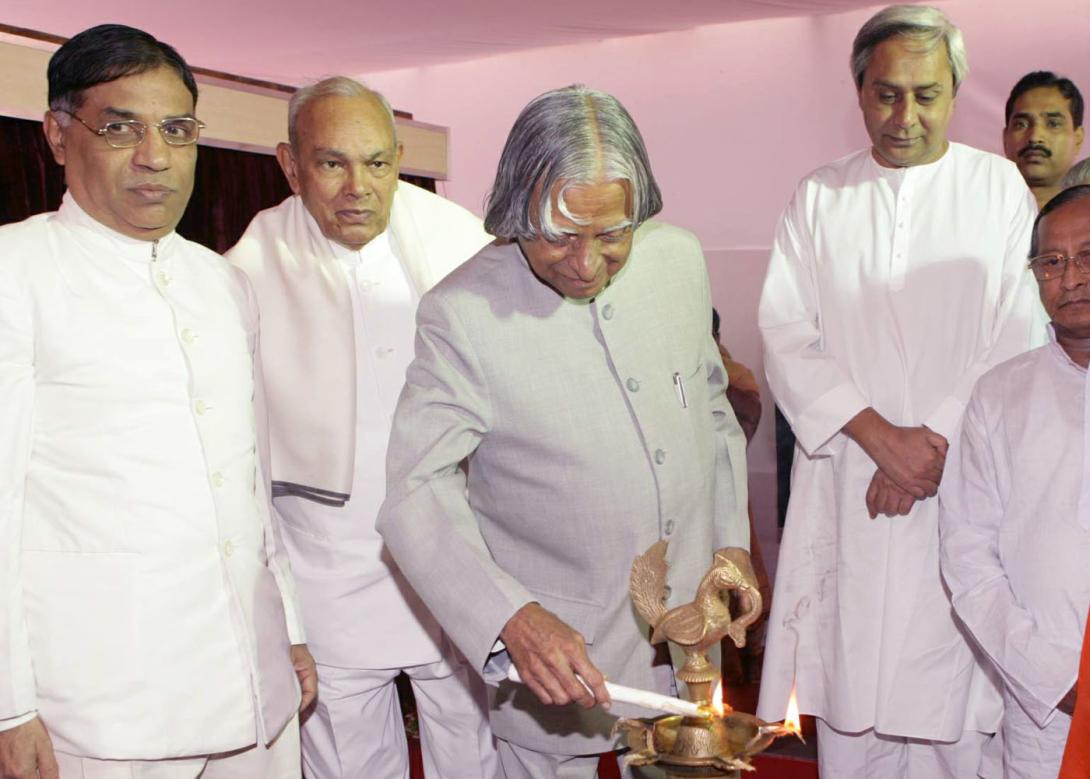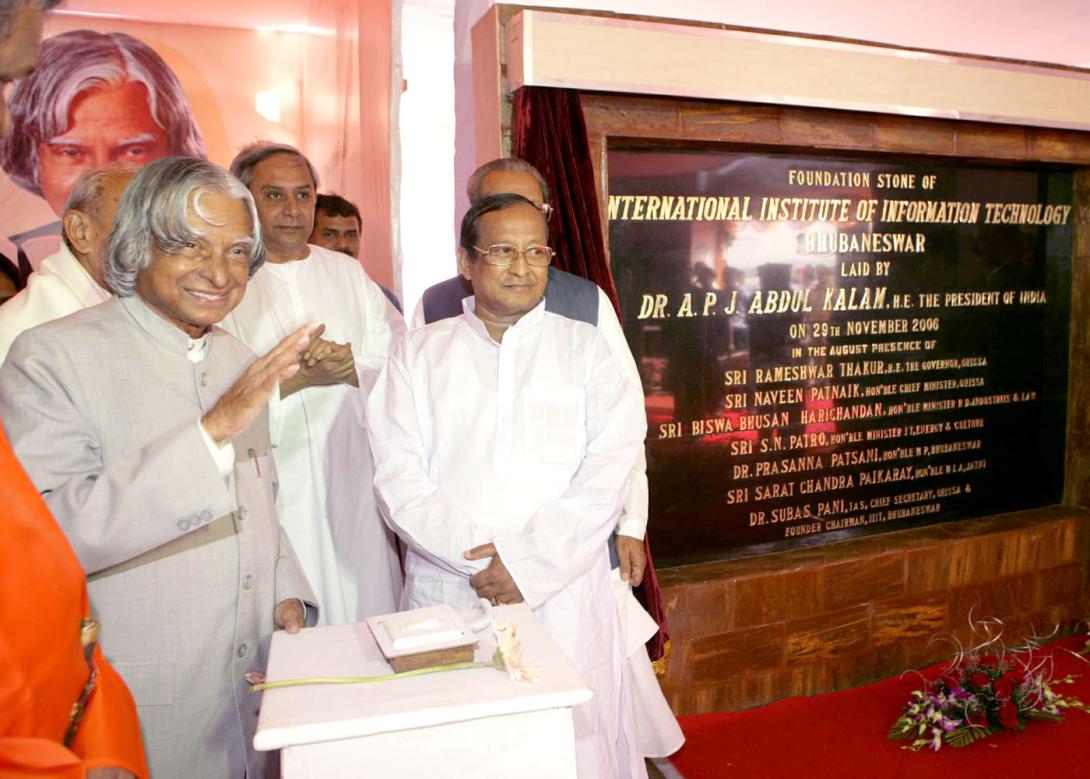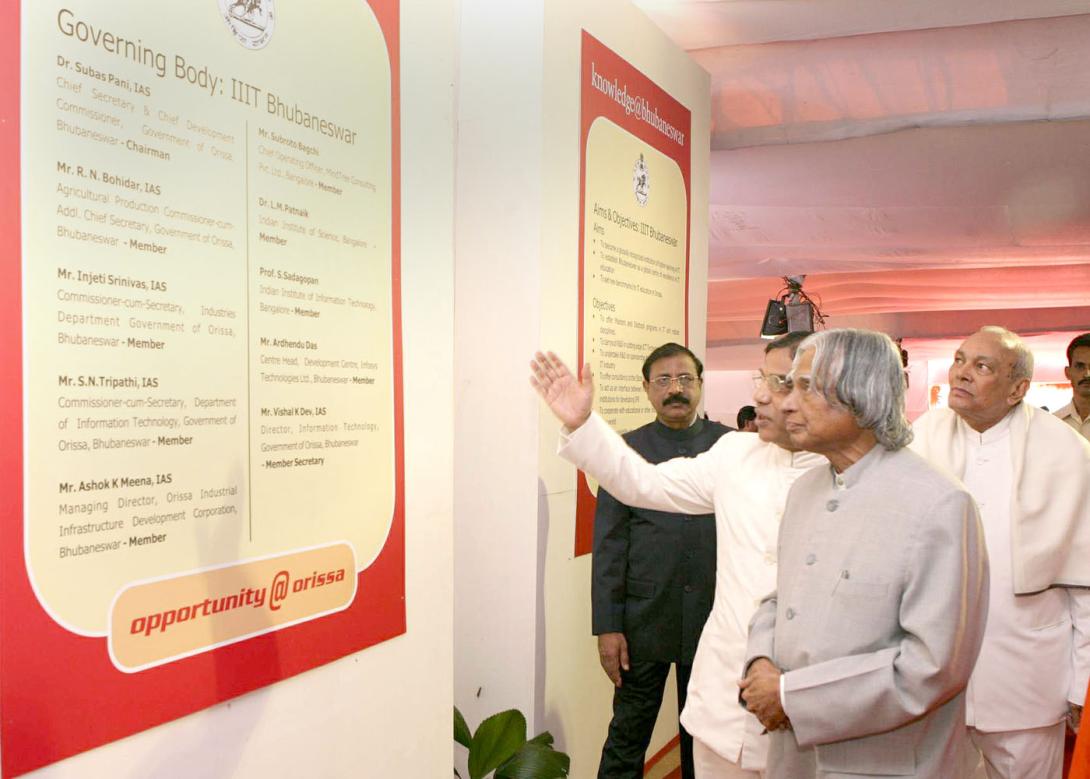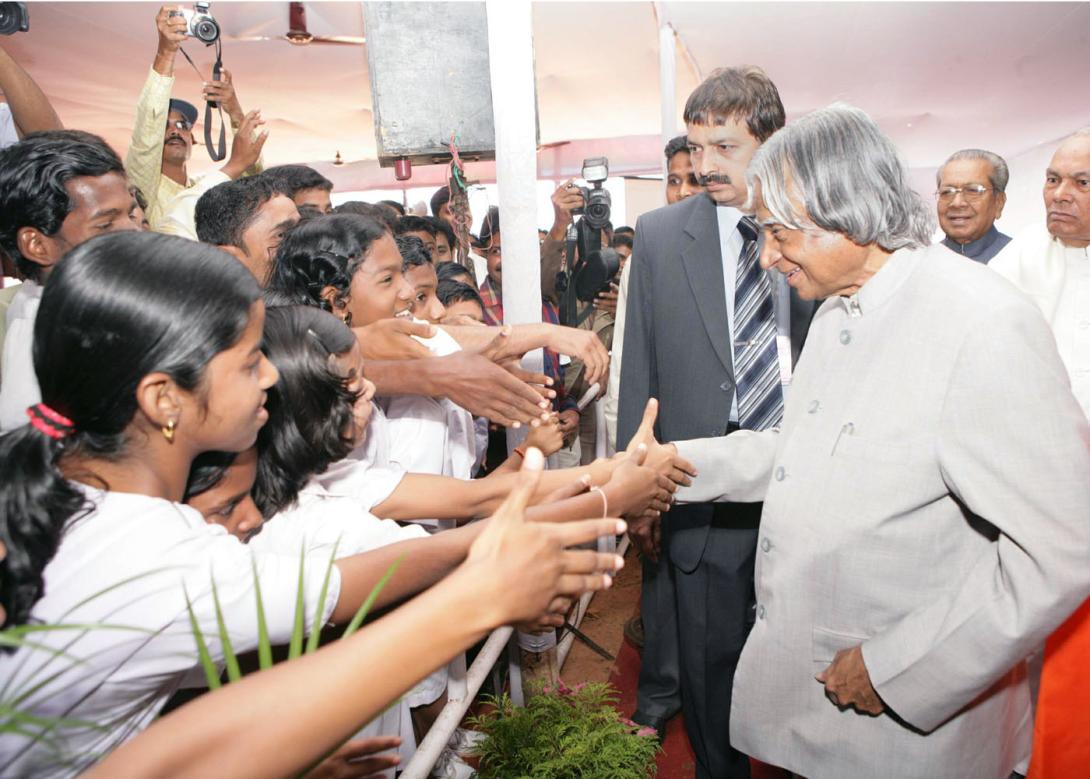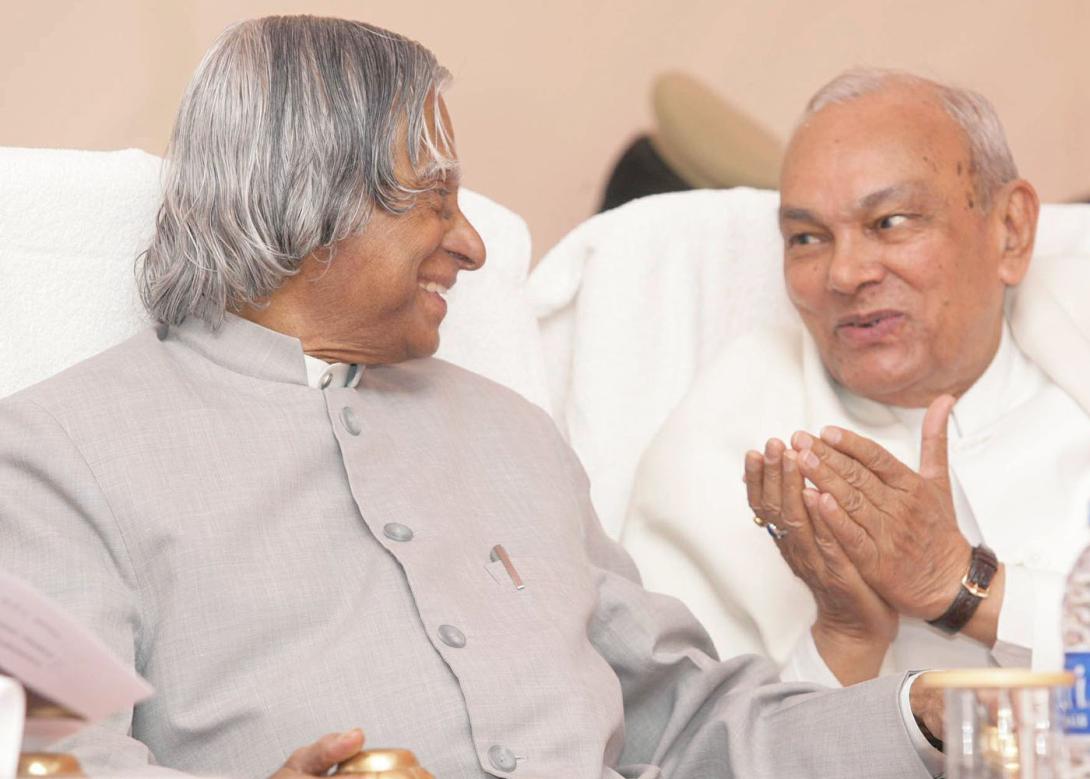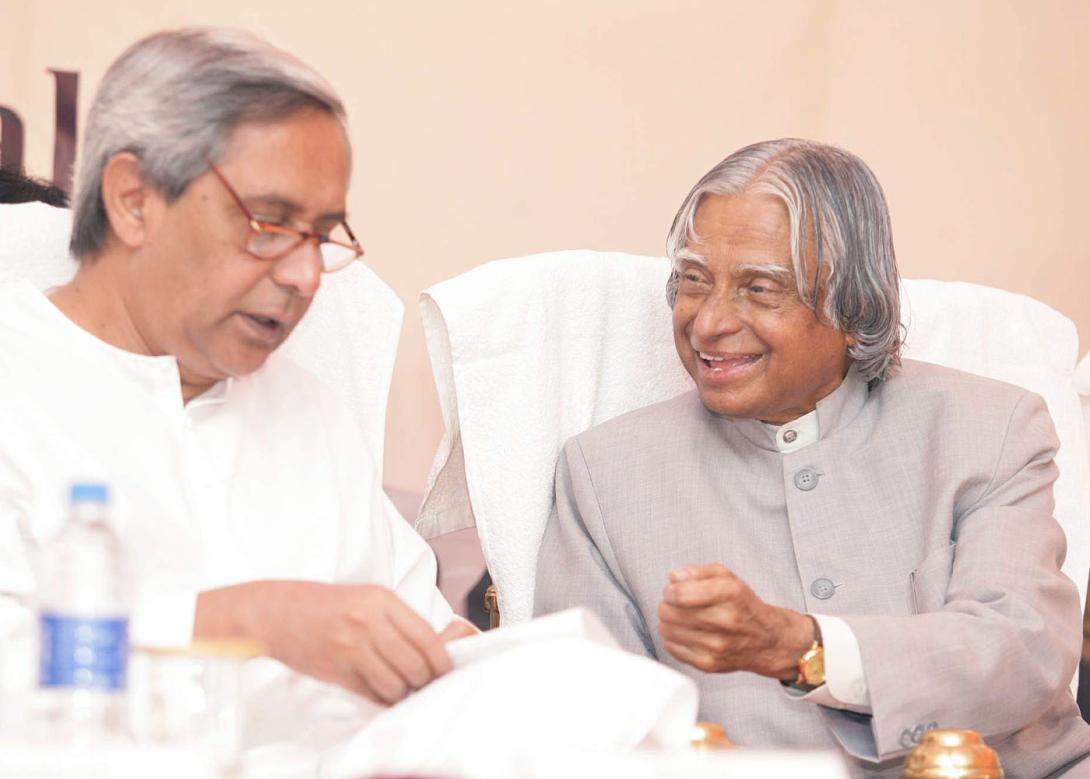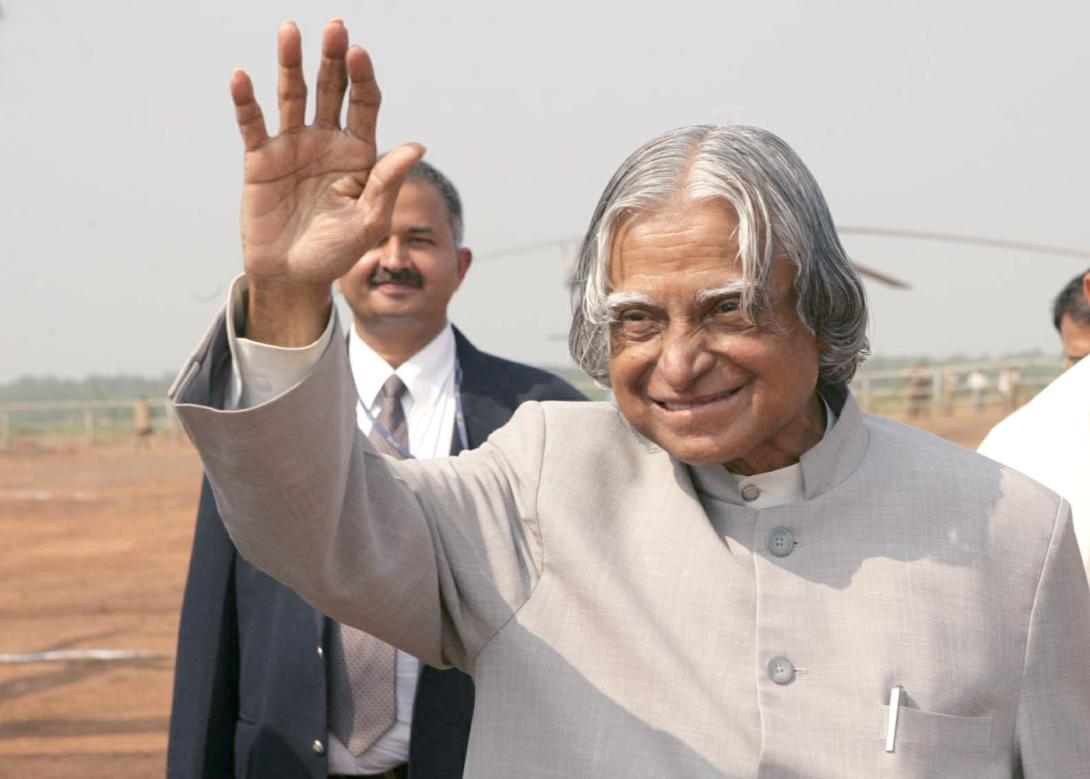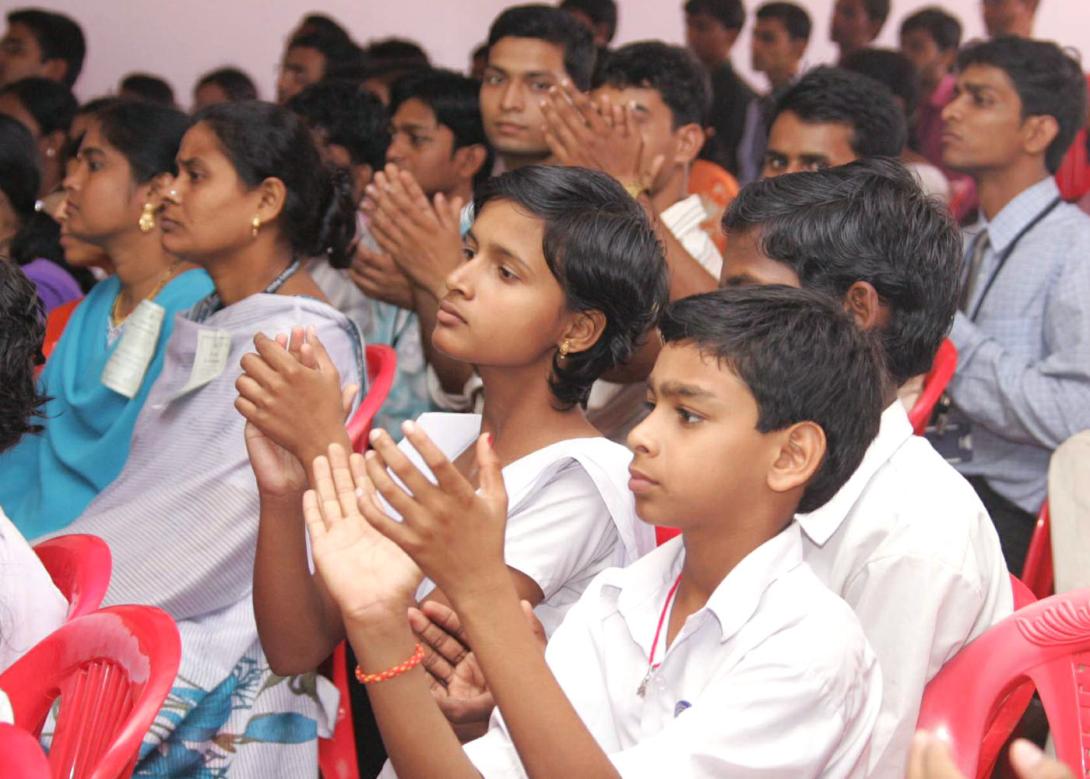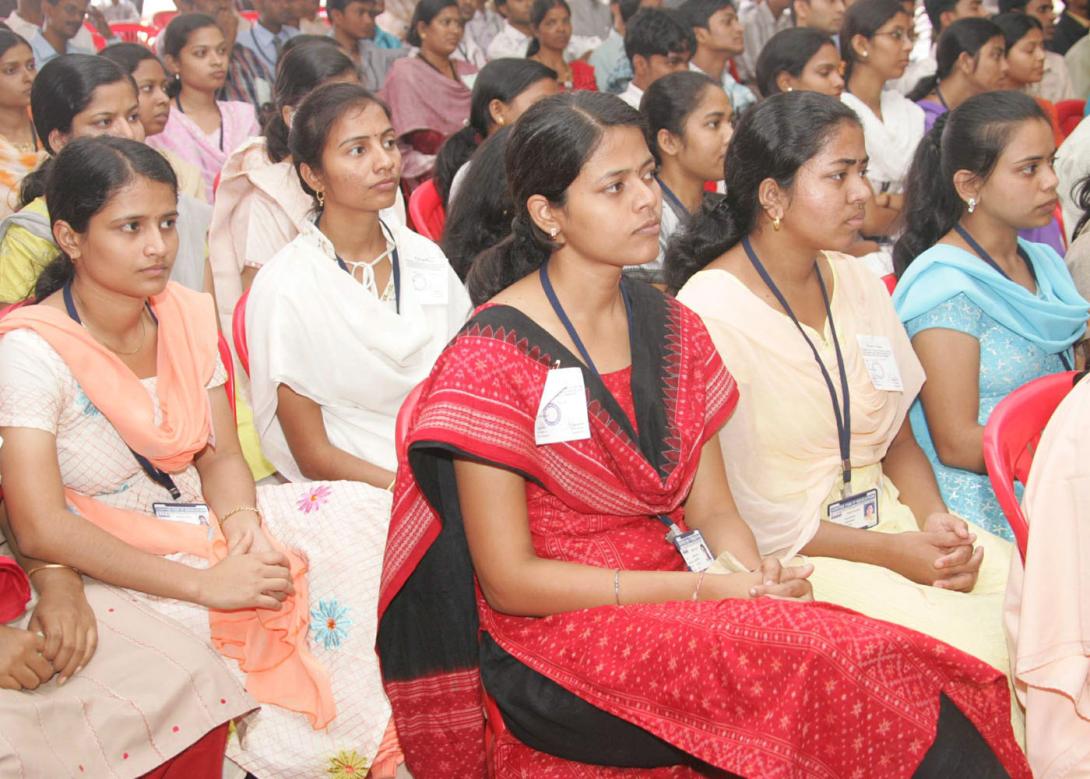Address During the Laying of Foundation Stone for International Institute of Information Technology
Bhubaneswar : 29-11-2006
Convergence of Technologies
Knowledge makes you great?
I am indeed delighted to participate in the laying of Foundation Stone for the International Institute of Information Technology (IIIT), Bhubaneswar. My greetings to the Chairman and Members of the Governing Body of the institute, dean of Centre for Information Technology Education, scientists, technologists and distinguished guests. The Information Technology is the core competence of India. Within the next five years there will be a requirement of over one million candidates for IT, ITES and BPOs sector in the country. Launching of IT education program through IIIT is an important step by the Government of Orissa for participating in this growth area.
India in transformation
India is well on its way to become a knowledge power, there are all round growth in all sectors of the economy namely the agriculture, manufacturing and services. Today we have an opportunity to take the leadership in the knowledge revolution. Knowledge revolution is indeed the foundation for leading India into a Developed Nation. For this, the time is ripe because of the ascending trajectory of the economy, availability of great institutions for capacity building of the human resource, abundant bio-diversity, and other natural resources and above all, our 540 million youth who are determined to make the nation prosperous, happy and a safe place to live well before 2020. I would like to discuss with you on the topic ?Convergence of Technologies?.
Convergence of Technologies
The information technology and communication technology have already converged leading to Information and Communication Technology (ICT). Information Technology combined with bio-technology has led to bio-informatics. Now, Nano-technology is knocking at our doors. It is the field of the future that will replace microelectronics and many fields with tremendous application potential in the areas of medicine, electronics and material science. When Nano technology and ICT meet, integrated silicon electronics, photonics are born and it can be said that material convergence will happen. With material convergence and biotechnology linked, a new science called Intelligent Bioscience will be born which would lead to a disease free, happy and more intelligent human habitat with longevity and high human capabilities. Convergence of bio-nano-info technologies can lead to the development of nano robots. Nano robots when they are injected into a patient, my expert friends say, it will diagnose and deliver the treatment exclusively in the affected area and then the nano-robot gets digested as it is a DNA based product. Convergence of ICT, aerospace and Nano technologies will emerge and revolutionize the aerospace industry. This technological convergence will enable building of cost effective low weight, high payload, and highly reliable aerospace systems, which can be used for inter-planetary transportation.
Bio-informatics: The convergence of bioscience and IT into Bio-informatics has given the thrust to researchers for genomics-based drug discovery and development. Pressure is mounting over the pharmaceutical companies to reduce or at least control costs, and have a growing need for new informatics tools to help manage the influx of data from genomics, and turn that data into tomorrow's drugs.
Bio-informatics data play a vital role and emerging as a business model for the medical and pharmaceutical sector. Key areas such as gene prediction, data mining, protein structure modeling and prediction, protein folding and stability, macromolecular assembly and modeling of complex biological systems are thriving and IT has major role to play in these areas in bringing the tools to manage the high throughput experiments and the data they generate, and sharing and integrating all the data in a meaningful way resulting into the detailed models of complex systems, particularly biological pathways.
Bio-Suite: I launched the Bio-Suite at Hyderabad on 14th July 2004, which is an important software package that caters to all aspects of computational biology from genomics to structure-based drug design. It incorporates the latest publicly known algorithms, as chosen by a panel of academic partners, and has been coded entirely by the Tata Consultancy Services (TCS) team, using the software engineering practices. It can be used by academic and R&D institutions, small and medium and large biotechnology companies. This bio-suite was developed by TCS in collaboration with Council for Scientific and Industrial Research (CSIR) and academic institutions.
Gene Chip: In 2004, I visited Dr. Cherian?s Medical Centre at Chennai. It is known as, International Centre for Biomedical Sciences and Technology (Research & Applications). There I interacted with Dr. Emmanuel, who is working in the area of Gene Chip. They have developed a Gene Chip which can be used for finding the existence of genetic diseases including coronary artery diseases or neuro defect in the baby during a certain stage of pregnancy itself. The chip could also be modified to suggest to the patient?s system to develop those chemicals, which in turn will help the patient recover from the present situation. The specialists assembled here may like to debate whether gene chip can be used for identifying the susceptibility of the baby to the allergic diseases in the advanced stage of pregnancy. Can medical bio-informatics help in finding a treatment regime for the mother, which may give immunity to the child from the allergic disease?
It is reported that gene differences between humans and most animals are very nominal. More than 90% of our DNA is similar. This property is a boon to researchers since animal models can be subsequently used for curing human diseases based on trial data. Medical researchers are progressing further in this area for finding the application of Gene Chip as a diagnostic tool and as a treatment regime for allergic diseases and asthma.
Nano Technology: When I think of Nanoscience and Nanotechnology, I would like to discuss about three scientists who have laid the foundation on nanoscience and nanotechnology. Mr. Richard Feynman, who described the concept of 'building machines" atom by atom in his talk at Caltech titled "There is plenty of room at the bottom". Mr. Eric Drexler, who wrote the book titled 'Nano Systems, Molecular machinery, manufacturing and computation". Prof CNR Rao, who pioneered and fostered the nanoscience research in India. Molecular nano technology has enormous potential for future aerospace systems and health areas. Research has shown that newly discovered class of molecules, leading to the development of carbon nano tubes that they have multiple applications in the system developed in the areas of electronics particularly nano-electronics and power systems. Carbon nano tubes are normal form of carbon with remarkable electrical and mechanical properties. It is hoped that such materials could revolutionize electronic design and open the space frontier by radically lowering the cost of launch to orbit.
Carbon Nano tubes reinforced with polymer matrix will result in composites which are super strong, light weight, small and intelligent structures in the field of material science. This has tremendous aerospace applications.
Molecular switches and circuits along with nano cell will pave the way for the next generation computers. Ultra dense computer memory coupled with excellent electrical performance will result in low power, low cost, nano size and yet faster assemblies.
Energy for future generations: The era of wood and bio-mass is almost nearing its end. The age of oil and natural gas would soon be over even within the next few decades. The world energy forum has predicted that fossil based oil, coal and gas reserves will last for another 5 - 10 decades only.
Hydrogen fuel and solar rays are the two modes to get clean power. The solar rays, when passed though presently available solar photovoltaic cells have an efficiency of less than 20%. I would like to discuss the latest research in the area of photo-voltaic cells using Carbon nano tubes which can give an efficiency of over 45%, nearly three times the efficiency which the present technology can offer.
CNT based solar cells for higher efficiency
The low efficiency of conventional photo voltaic cells has restricted the use of solar cells for large application for power generation. Research has shown that the Gallium Arsenide (GaAs) based PV cell with multi junction device could give maximum efficiency of 30%. Therefore, the present research trend is on the use of Carbon Nano Tube (CNT) based PV cell. Both single wall CNTs and multi wall CNTs have been used as electrodes, as electron acceptor, which can split exciton into electrons and holes to produce electricity.
The CNTs provide better electron ballistic transport property along its axis with high current density capacity on the surface of the solar cell without much loss. Higher electrical conductivity and mechanical strength of CNT could improve the quantum efficiency to the order of 35%. But, this is not sufficient. Recent research abroad has shown that the alignment of the CNT with the polymer composites substrate is the key issue and this aligned CNT based PV cells would give very high efficiency in photovoltaic conversion. The polymer composites increase contact area for better charge transfer and energy conversion. In this process, the researchers could achieve the efficiency of about 50% at the laboratory scale. The optimum efficiency was achieved with the aligned CNTs with poly 3 ? octyl thiophene (P3OT) based PV cell. I am sure, scientific researchers from Orissa will be excited to work in this area of research in partnership with industries so that we can get large scale production of aligned CNTs with P3OT based high energy solar cells. Now I would like to describe the societal grid, which is essential for bringing the connectivity for the billion people towards building the knowledge society.
Technology to Society ? Societal Grid
Development of technologies and their convergence have significant influence on the society in terms of knowledge, health care, governance and economic development. To maximize the synergy between the various components of education, healthcare, e-governance, rural development we need to establish connectivities among them. These connectivities will certainly bring seamless access and information flow among the various domains leading to maximization of GDP and productivity; hence, there is need for establishing the GRIDs namely Knowledge grid, healthcare grid, e-governance grid and the PURA (Providing Urban Amenities in Rural Areas) grid. This interconnecting grid will be known as societal grid. Knowledge sharing, knowledge utilization and knowledge re-use is very vital by all constituents of the society for promoting non-linear growth.
Details of Societal Grid are:
1. Knowledge GRID - Inter connecting universities with socio-economic institutions, industries and R&D organizations.
2. Health Care GRID - Inter-connecting the Health Care institutions of Government, Corporate and Super specialty hospitals, research institutions, educational institutions and ultimately, Pharma R & D institutions.
3. e-Governance GRID - Inter-connecting the Central Government and State Governments and District and Block level offices for G2G (Government to Government) and G2C (Government to Citizen) connectivity.
4. PURA GRID - Connecting the PURA Nodal centers with the Village knowledge centres and Domain service providers.
These four connectivities will lead to societal transformation.
Conclusion
Based on my visits to all the States and Union Territories in the country and 14 countries in Asia, Europe and Africa as the President and meeting over one million youth, I realize that all the youth irrespective of which country they belong to, aspire to live in a peaceful, happy, prosperous and safe nation. What does it mean? It means that economic prosperity alone is not sufficient. It has to be complimented with the value systems and our five thousand years old Civilizational heritage which has genetically shaped the Indian people. I personally believe, when the nation is progressing towards economic development, it is also essential to build education with value system drawn from our Civilizational heritage. The good human life comes out of the way we live; we may have series of problems. But the billion people have the connectivity which gives us the united strength. To meet the challenges of such a missions for the nation institutions like IIIT have to play an important role.
My best wishes to all the participants on this function for success in their mission of promoting Information Technology in Orissa.
May God bless you.

